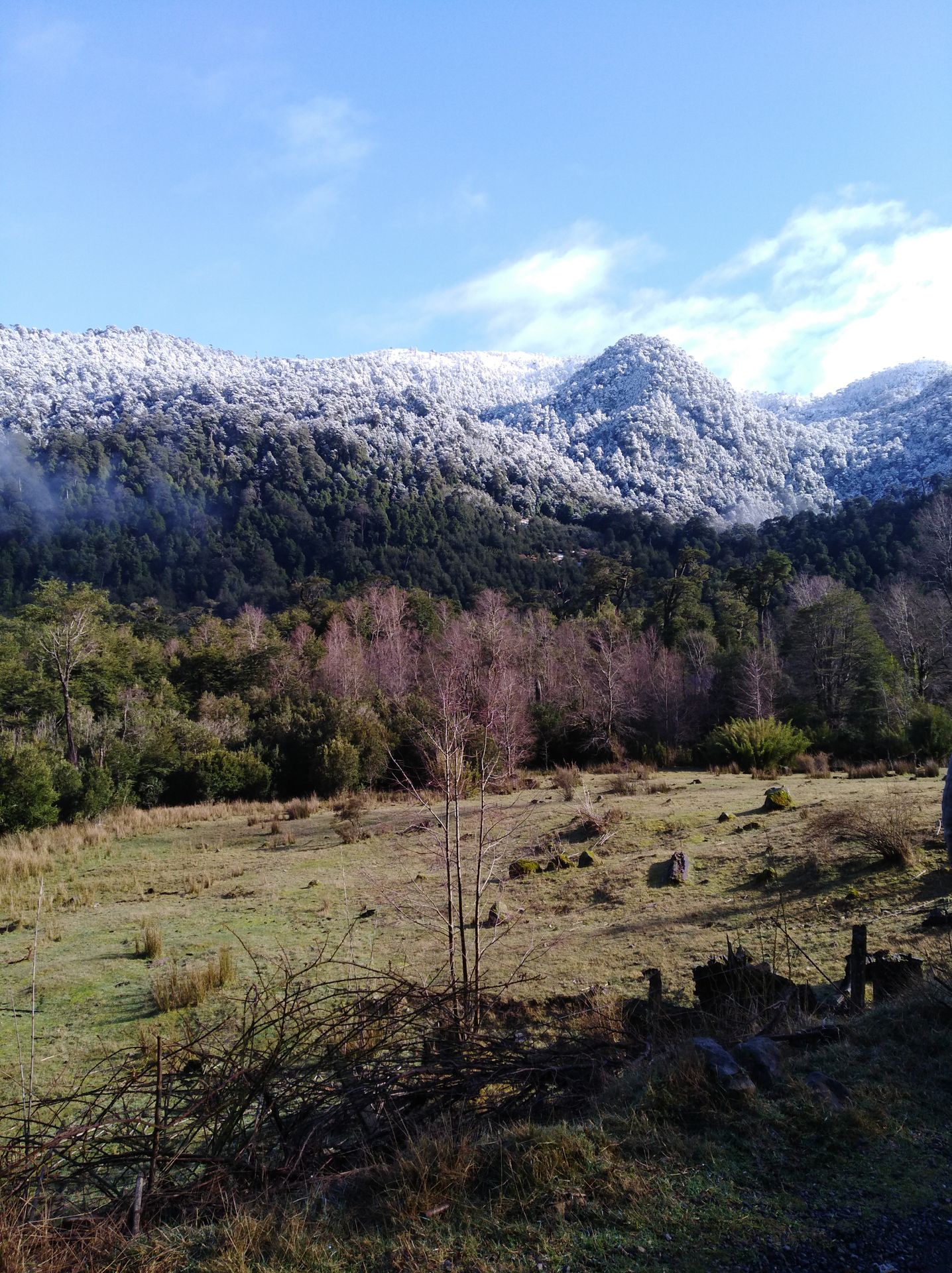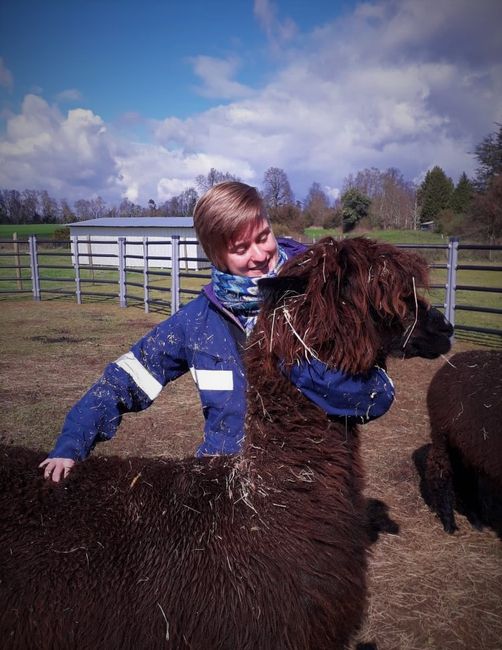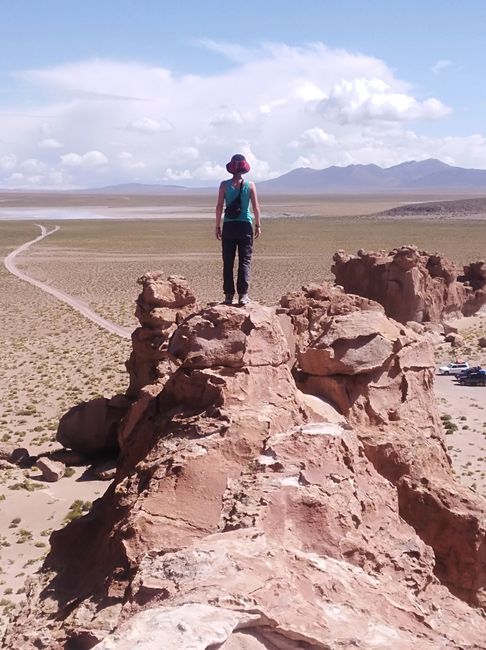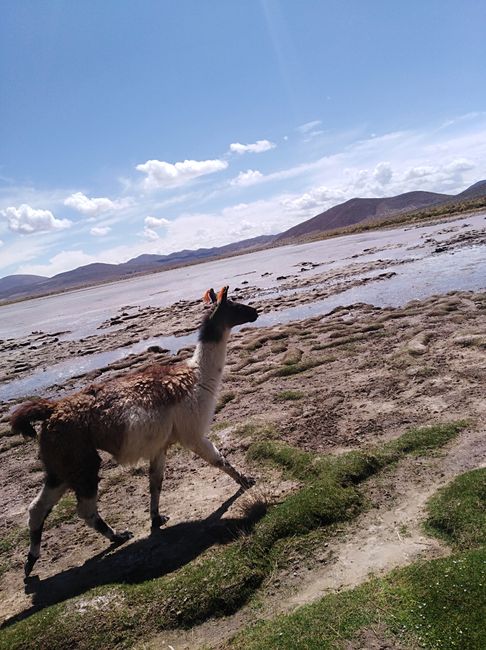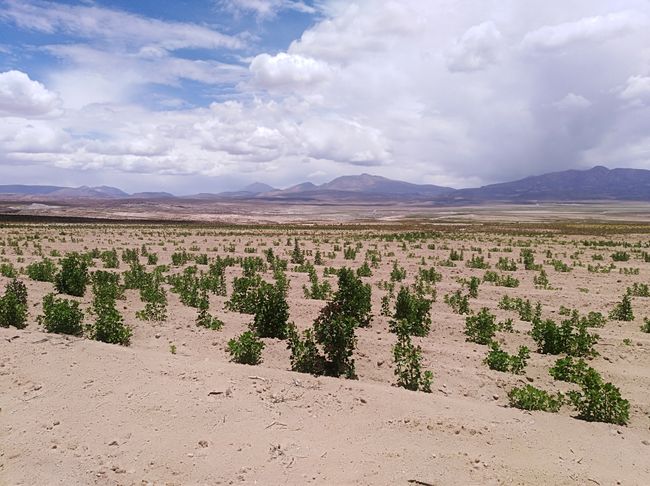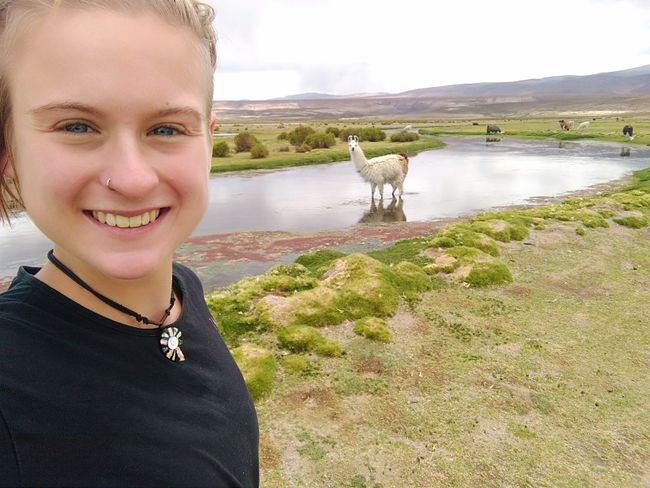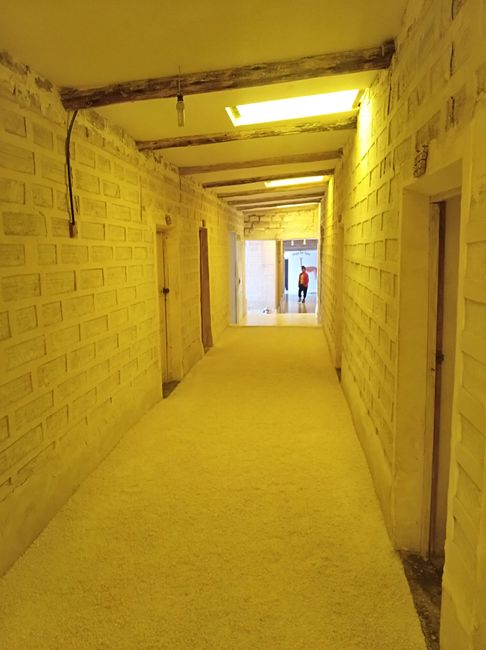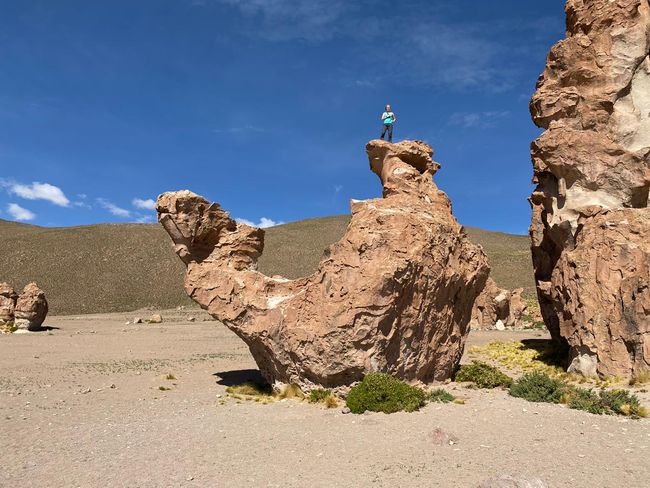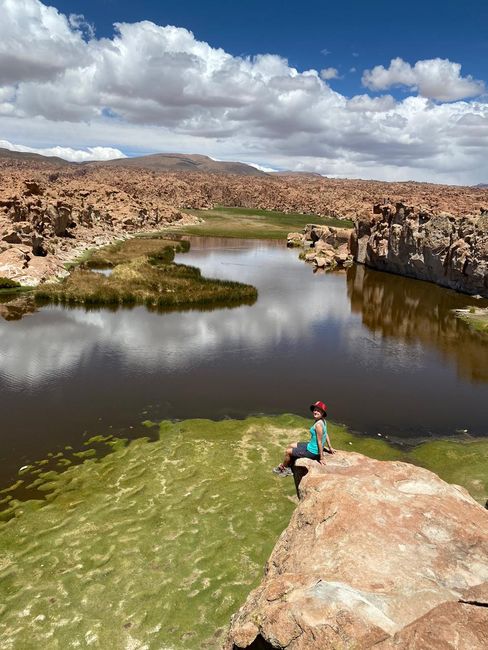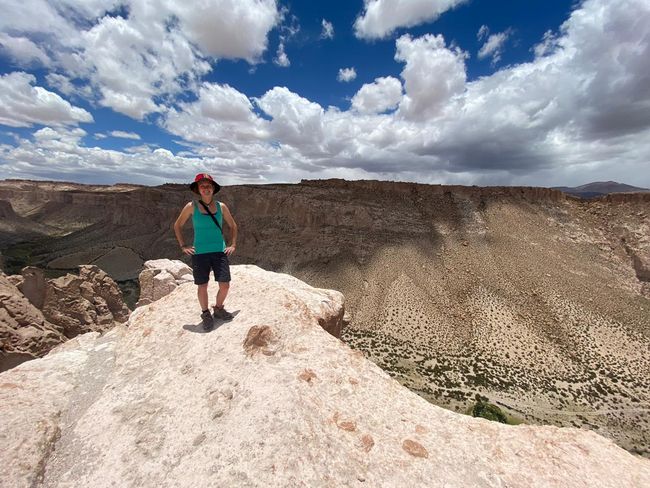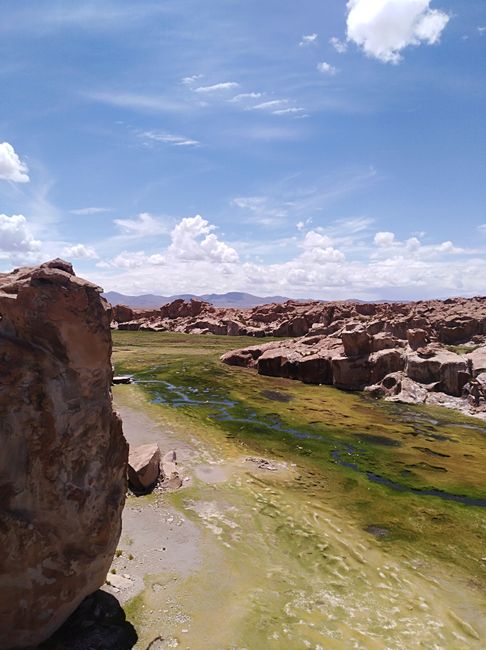Roadtrip Salar de Uyuni- Part 2
Dɛn dɔn pablish am: 21.01.2020
7:30 AM: the alarm clock rings mercilessly. I have a headache and I'm not sure if it's due to the altitude, lack of sleep, or the late dinner with that strange instant coffee. The Bolivians seem to have a sweet breakfast, with fluffy pancakes with 'Dulce de Leche' or jam. I would like something more filling, but I guess I'll have to wait until lunch.
We drive to different volcanic rock formations. Unfortunately, there are only theories about their formation. Either the wind polished these rocks or the remaining parts sank during an eruption. Nature has once again created unique artworks, such as the 'Copa del Mundo' or the camel. We can even climb on them to get beautiful views and take photos. Sometimes I felt a bit fearless, being without any safety measures. But the rocks provided good holds and steps.

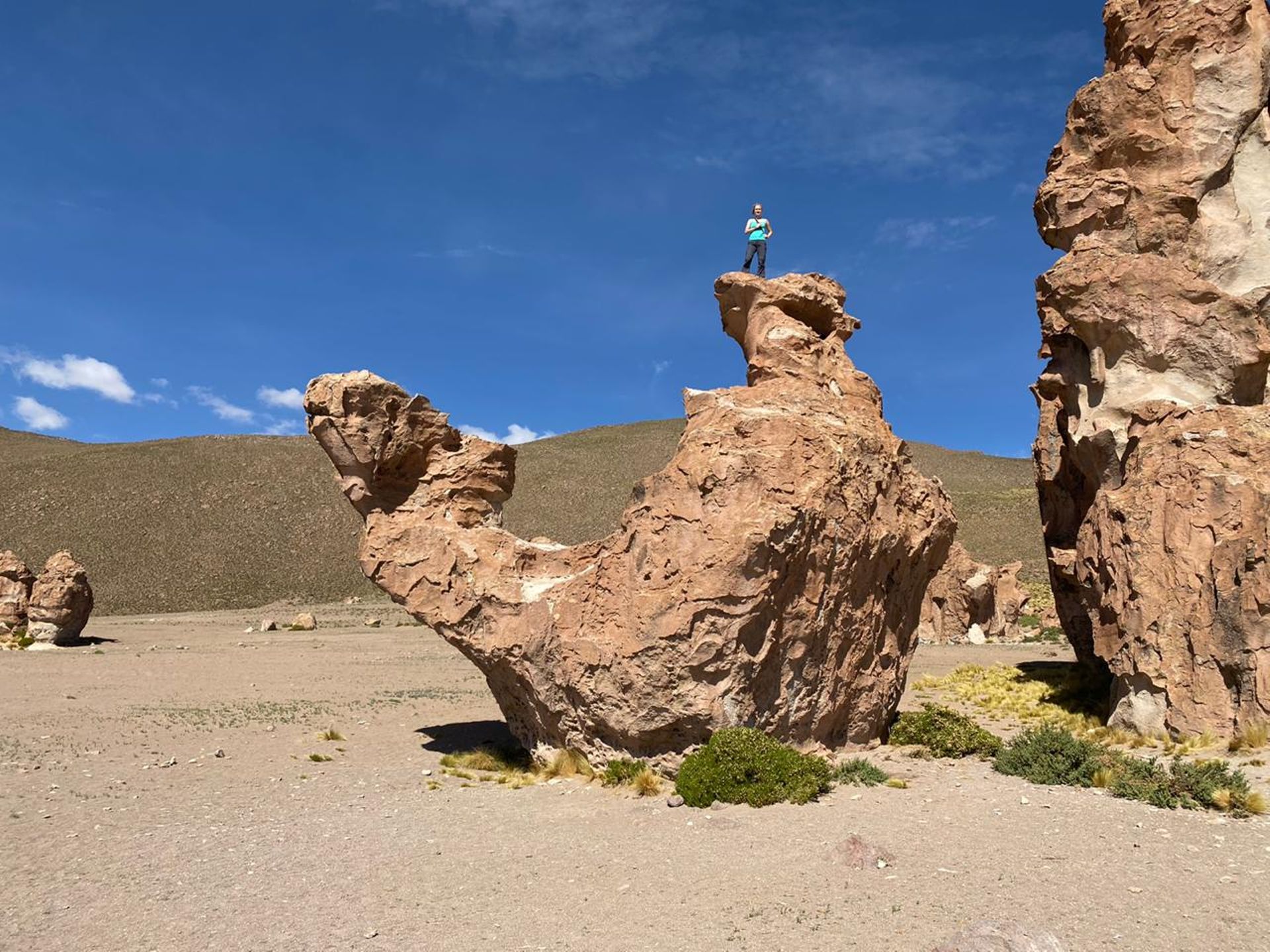
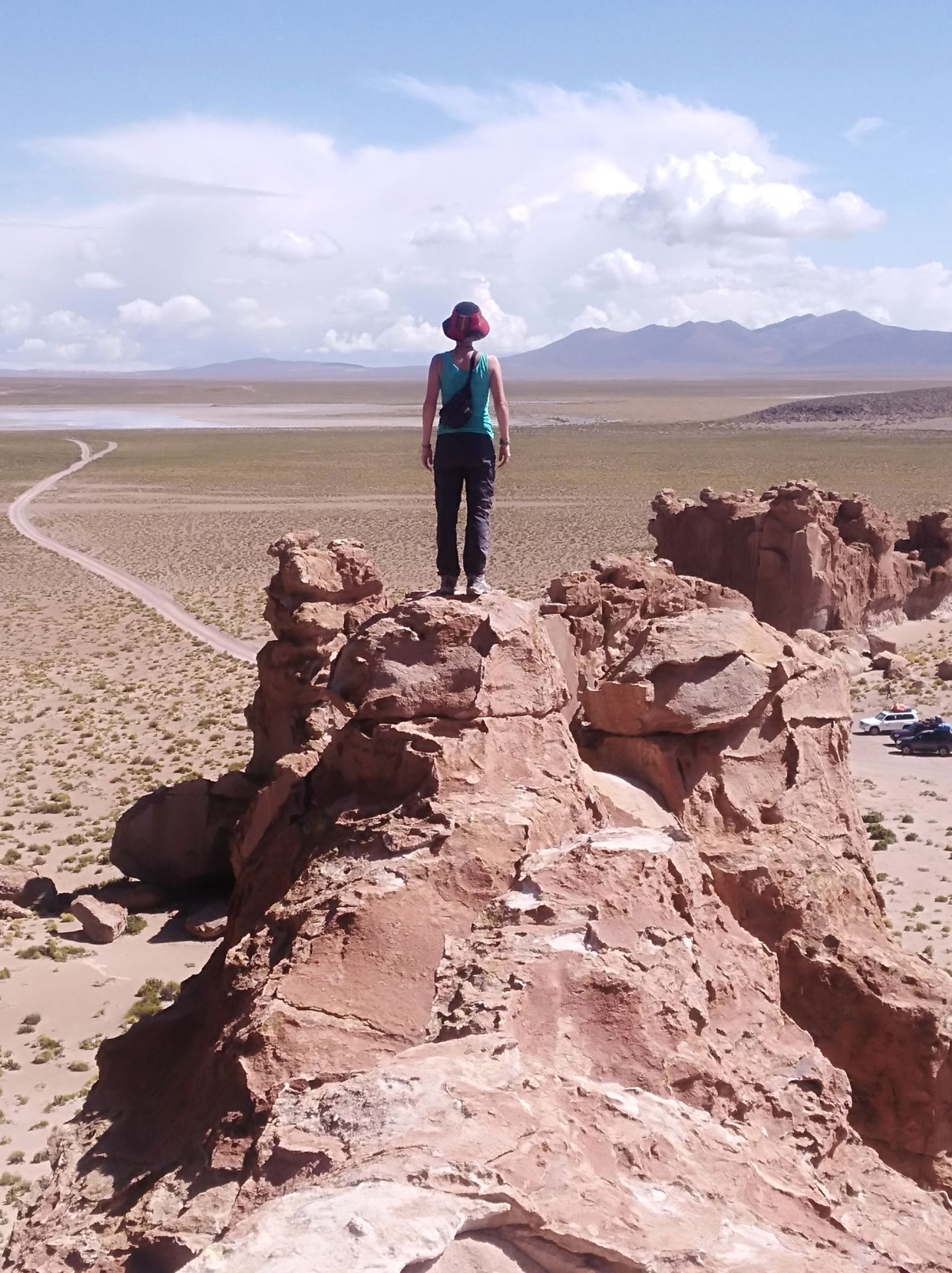
After the adventure, we stopped at a valley where a wetland extends. I would have never believed that dry rock formations can turn into an oasis within an hour. A 10-minute walk led us to a lagoon! At the 'Laguna Negra', I could observe beautiful prickly flowers and even 'Viscatchas'. At each stop, we have enough time to take in the landscape (or take fancy photos in all positions). I try to burn all the landscapes and views into my mind, it's unique (how many times have I used this word?! Sorry for that).
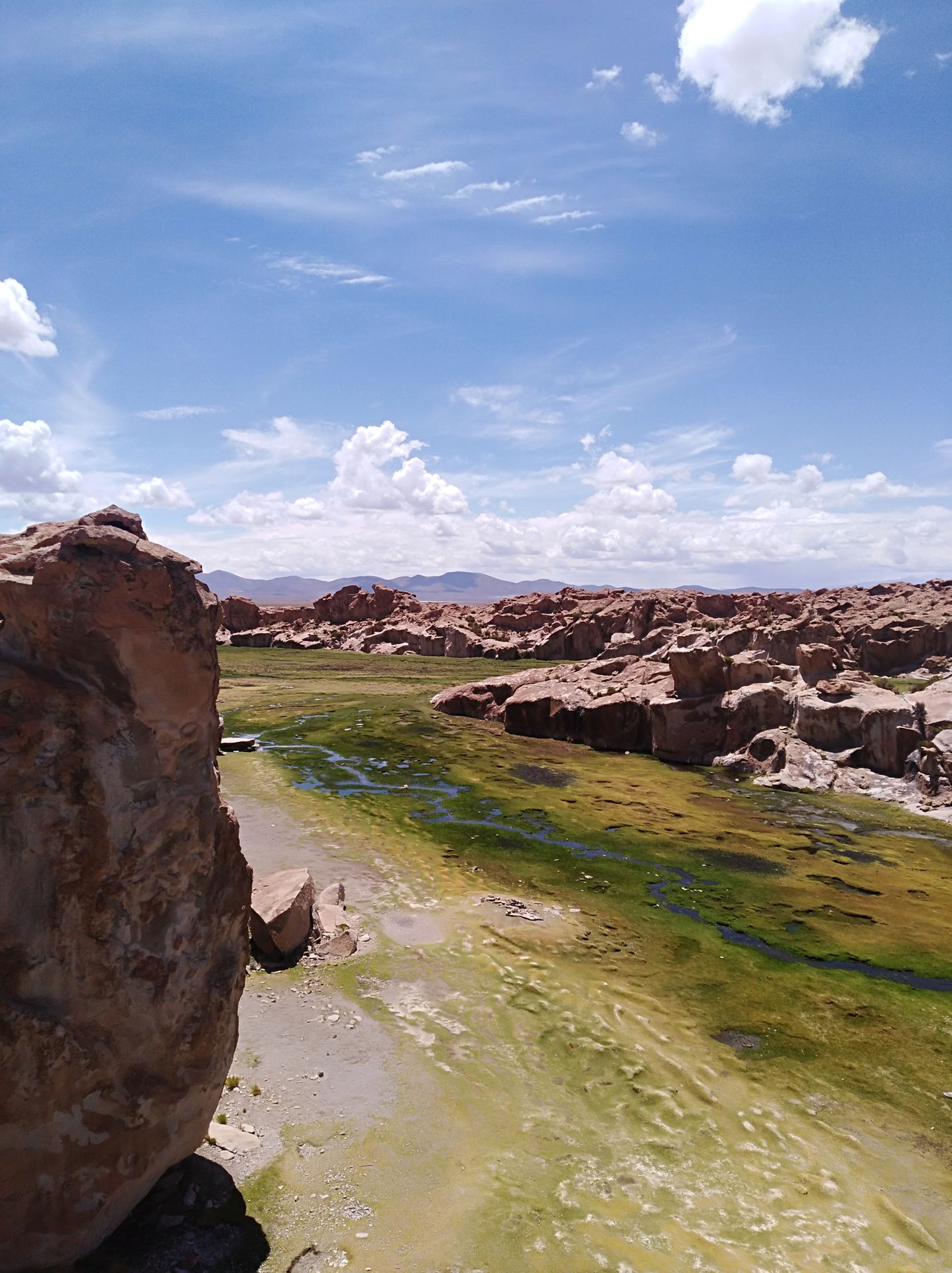
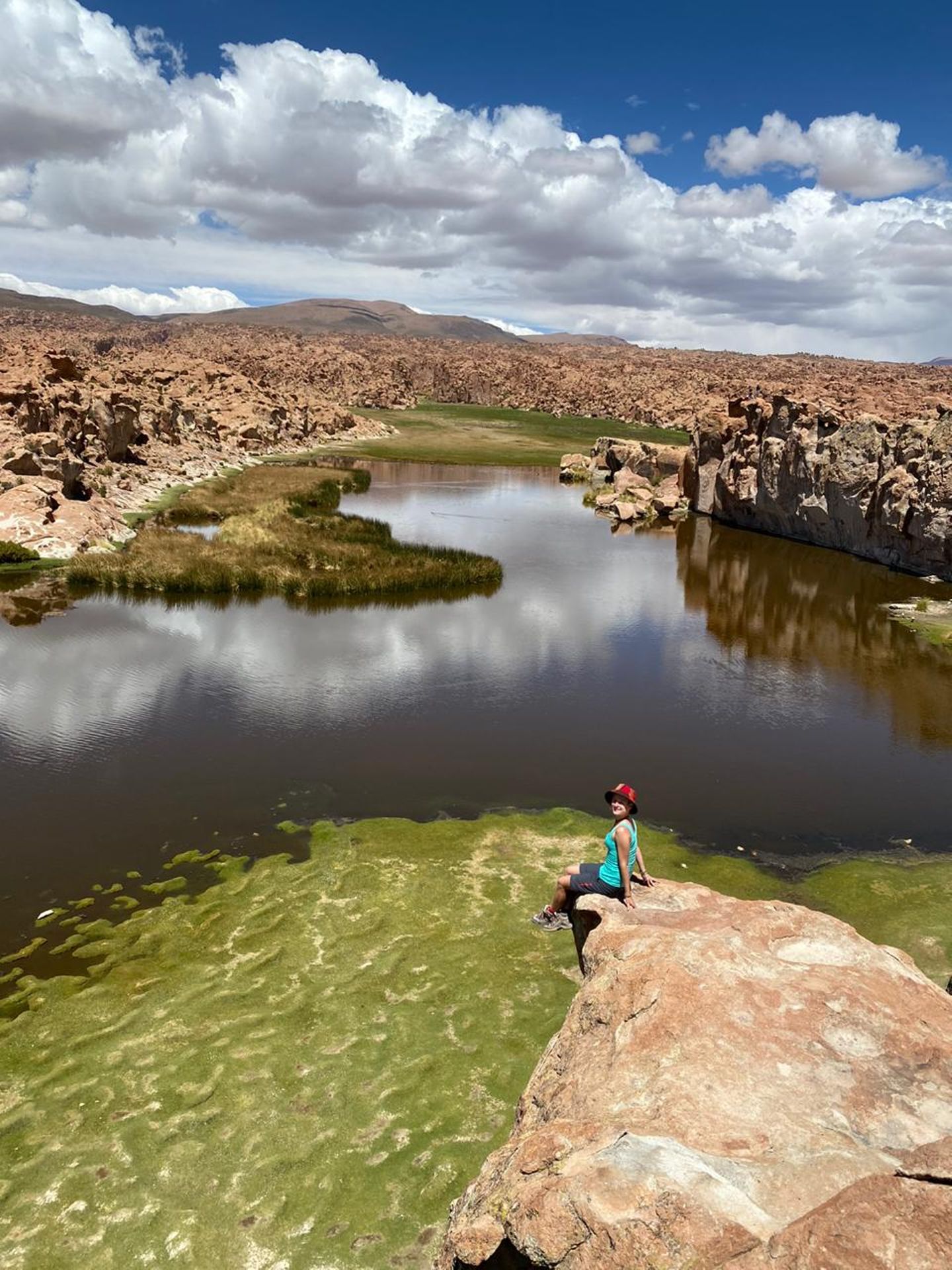
The surroundings are becoming greener, and for the first time in my life, I see quinoa fields. The plants take half a year to grow, and later, the dried seeds are eaten. A plant grows up to a height of 1.70m and produces about 100g of quinoa. I had no idea about the plant behind the food, I didn't expect it to look so much like a weed. I learn that in this region, people mainly eat quinoa and llama meat. It's crazy how both foods are expensive for us and here they have them in abundance for the poorer population.
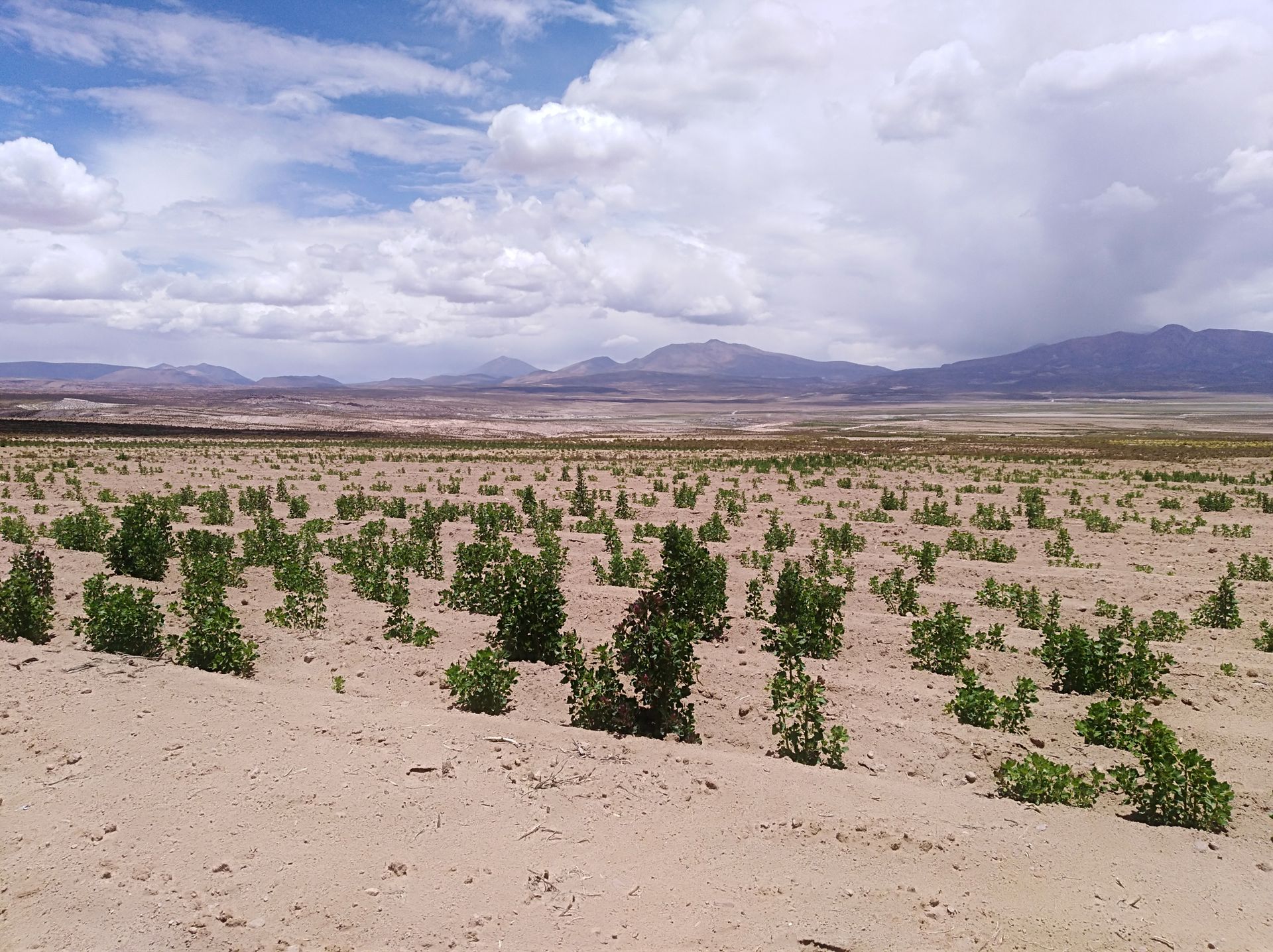
We continue to the Mirador Anakonda. A rock formation rises above a canyon. In the valley, you can see a winding river. Just like a snake. I would love to descend to explore the vegetation around the river. Unfortunately, that's not on the itinerary.

Instead, we stop a little later at a stream where llamas are grazing. They even have young ones! We're also hungry, so Diego serves us a delicious potato casserole and rice with tuna. The casserole is somehow 'stacked wrong'. It starts with a layer of mashed potatoes, then minced meat with vegetables, and on top an egg mixture. 'Pastel de Papas' is probably typical and was freshly prepared this morning by the women at the hostel.
Having a picnic directly on a meadow next to the llamas is super idyllic. Most of them have colorful wool marks on their ears, depending on which farmer they belong to.

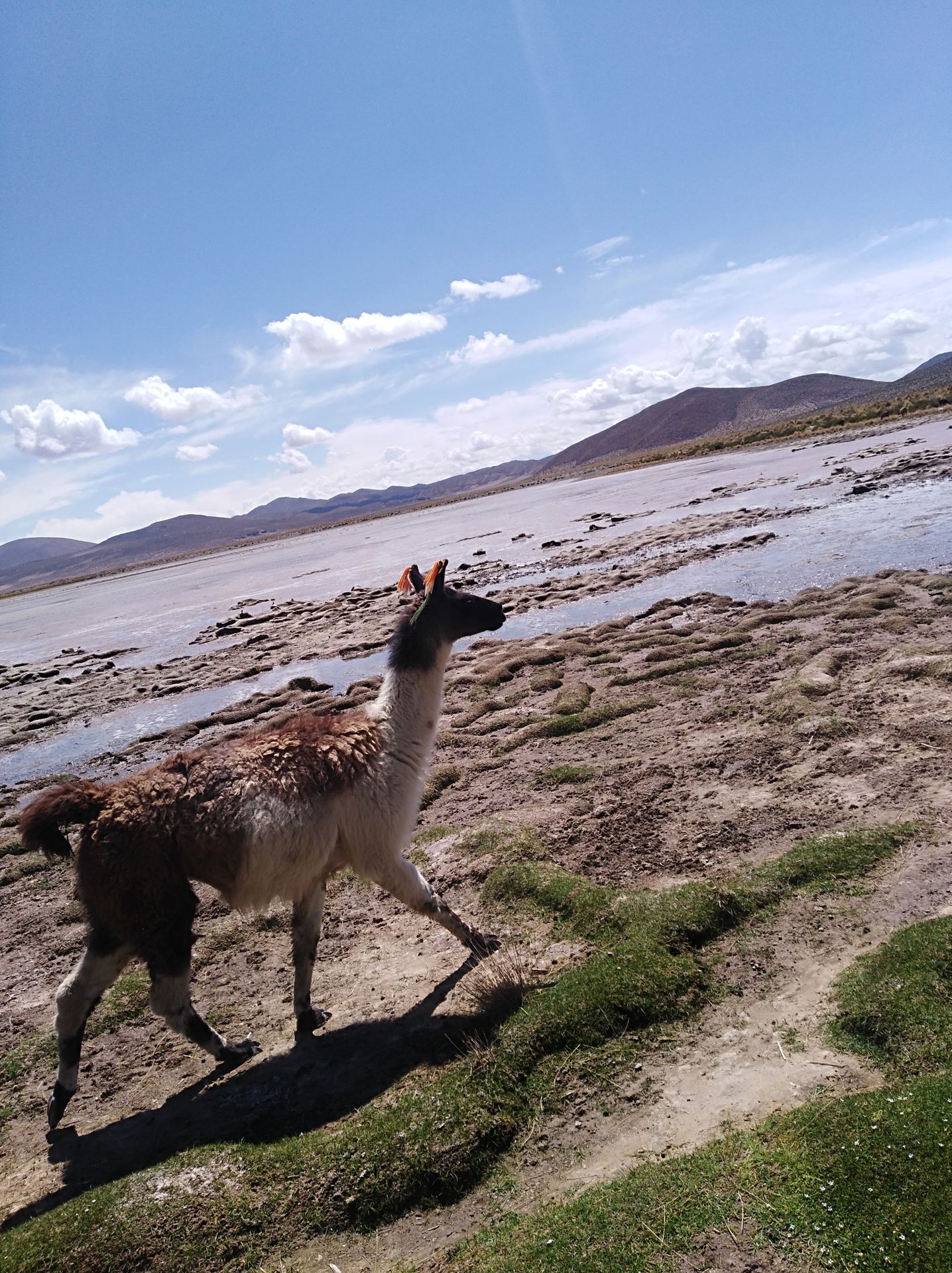
We pass through various small villages, all of which look very poor. All the houses look the same: one-story buildings made of brown bricks with thatched roofs. The streets are arranged in a square pattern and there is no plant growing anywhere, which makes everything look dirty. I don't think I could feel comfortable here. We stop in 'Colcha', where there are exactly two shops selling artisanal food. I drink a cactus beer and buy overpriced chocolate with salt from Uyuni.
In return, I drink a cocoa mate to combat altitude sickness, and it actually helps with my headache.
Finally, we arrive at a hostel in Puerto Chuvica, right next to the Uyuni salt flats. And indeed, the whole hostel is built with salt, which insulates against the cold at night and slightly reduces the heat during the day due to its heat-storing material. And here, there is even warm water for a shower, I feel human again. The only strange thing is that here, you have to buy toilet paper separately.
We have some time to rest before ending the day with a glass of wine and chicken with potato wedges. Another day full of experiences and impressions.
Frieda (January 13)
Ansa

Travul ripɔt Bolivia
